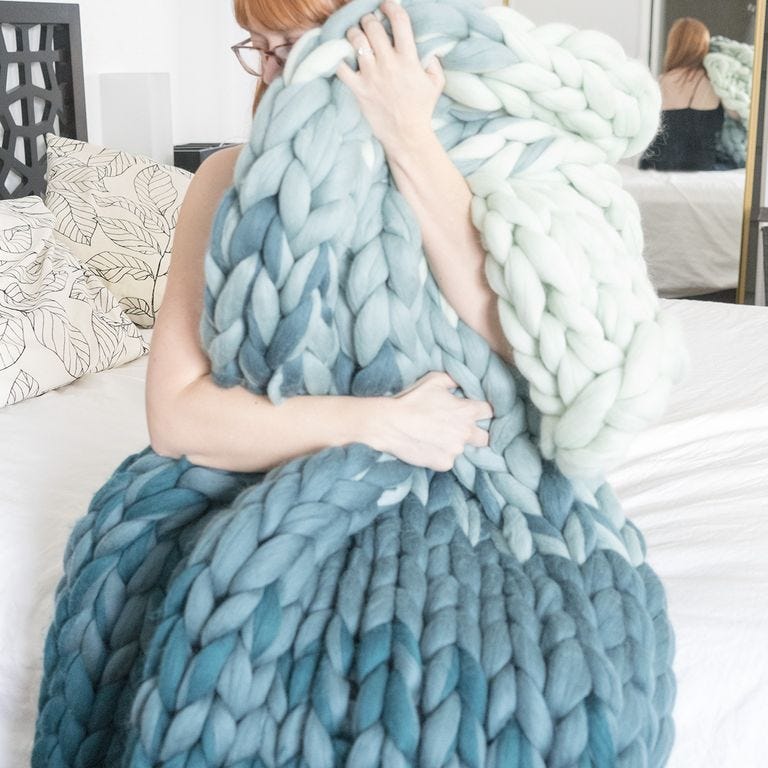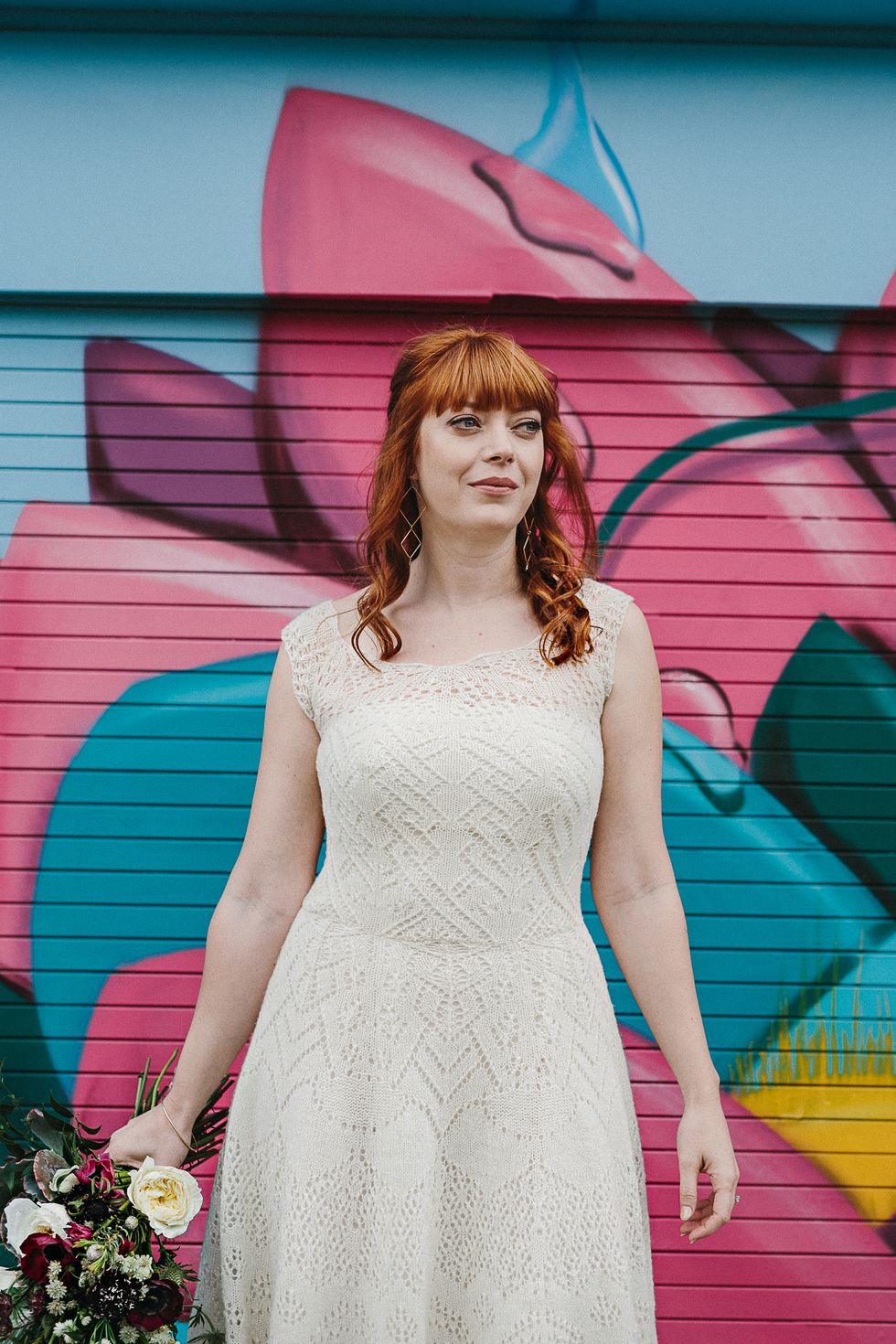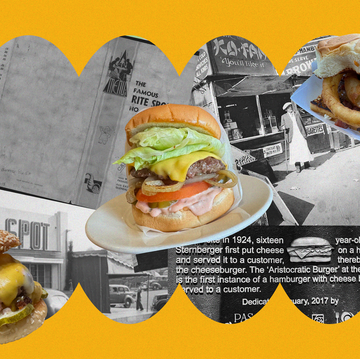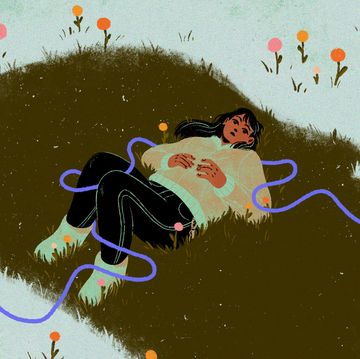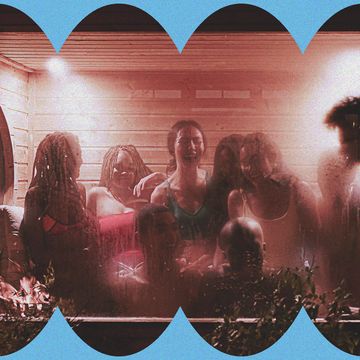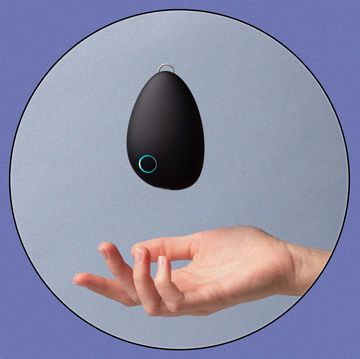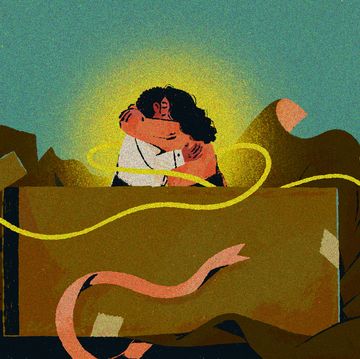When I was a sophomore in college, on a whim, I bought a pair of cheap aluminum knitting needles and acrylic yarn. I had no idea how to knit, but I felt the urge to make something with my hands. I was in the middle of an intense period of my life — attending a notoriously rigorous school, living far from my family and friends, and feeling ambient stress building up around me like a thickening fog.
One night, I opened up my tangerine clamshell iBook and entered “learn to knit” into my Yahoo! search bar (it was the year 2000). That night, I somehow stumbled upon a hobby that was a perfect antidote to my simmering anxiety. Twenty years later, and I’ve written a knitting book, published dozens of knitting patterns, and I even knit my own wedding dress. If I could learn to knit from the proto-internet of the millennium, you can definitely learn today.
Why learn to knit?
Knitting has been shown to promote wellness by reducing stress, creating strong social bonds, and increasing your feelings of usefulness.
The repetitive and rhythmic movements of knitting are often equated with meditation. Once you get past the initial hurdle of learning, knitting can be as relaxing as yoga (without ever having to leave your couch). Knitting and other needle arts have been shown to reduce anxiety, depression, and even help in treating eating disorders.
When you’re working on a project, hours can go by where you’re just in the moment, enjoying the process. It reminds me of the concept of flow, introduced by Mihaly Csikszentmihalyi, who has a TED talk and book of the same name. Csikszentmihalyi did extensive research across different cultures and found that people were happiest when they were completely absorbed in a task, labeling that “in the zone” feeling as “flow.” Research backs this up: one published study has named flow as one of the major reasons knitters pursue the craft.
If you don’t care about self improvement, how about knitting for others? A handmade baby blanket is always going to be the best gift at a baby shower, and your mom will proudly wear any scarf you knit her (even if it’s not perfect). Preemie babies need handmade hats, cancer patients need chemo caps, shelter dogs need loveys — there’s no end to charity knitting projects. You can even knit a sweater for an oil-spill-affected penguin.
Knitting for others isn’t just a nice thing to do, it will make you feel better. You’ll not only have the pride of creating something amazing (after a long, meditative session making it), but you’ll have the glow of knowing you’ve helped someone out.
It’s a win-win.
Here’s how you start
The first step is to get some knitting needles and yarn. There are hundreds of yarns available, ranging from lace weight to super-bulky. I usually recommend beginners get something called “worsted-weight” yarn, which is large enough to see easily, but not so big it hurts your hands. Lion Brand’s Wool-Ease is a great starter yarn, it’s relatively inexpensive, and you can find it at any Joann Fabric or Michael’s across the United States, and you can order online and have the supplies shipped to your home.
Whatever yarn you choose, make sure you actually like it — you’re going to be spending a lot of time with this yarn. I wouldn’t splurge on the most expensive ball for your first project, but it should feel good in your hands and be a color you enjoy.
Once you have your yarn picked out, you’ll need some needles to match. On every yarn label you’ll see a little key that shows you what needle size is recommended. For worsted-weight yarn, that’s usually a size 7 or 8. And while most people picture knitters using two long, pointy sticks, there’s a ton of different types of knitting needles. The traditional ones are called “straight needles,” but I prefer “circular needles” because they are easier to manage, allow you to work wider projects, and don’t hit your knees when you’re knitting on the couch.
You can choose from metal, wood, bamboo, or plastic needles. They’re all good for different purposes, but I generally recommend wood or bamboo for beginners because they’re less slippery than metal or plastic, and allow more control over your stitches when you’re still getting the hang of knitting.
So now that you’ve geared up, how do you get started? The internet is full of tutorials on how to knit, but the abundance of resources can also be overwhelming. The one benefit I had twenty years ago was only having a few options to choose from. Today, if you search “learn to knit” on YouTube, there are hundreds of videos. I really like Sheep & Stitch for beginner tutorials. But before you fall into the rabbit hole, I’m going to tell you exactly what you need to learn.
There are actually only three basic things you need to understand to get started:
- Cast on
- Knit stitch
- Bind off
How to cast on
Casting on is the process of getting the first row of stitches onto your knitting needles. There are a number of cast-on methods, and knitters will forever argue over which method is superior. Many will recommend beginners start with something called the “backwards-loop cast on,” arguing that it’s the simplest and easiest to understand. The downside to the backwards loop is that it creates a flimsy foundation row, and can make knitting the first few rows very difficult.
Instead, I recommend beginners master the “long-tail cast on”, which is more involved but more stable and creates a nicer edge for your knitting. Also, it looks very impressive to friends and family once you can do it without looking! Practice the cast on a few times before moving on to the next step.
How to knit stitch
The knit stitch is, quite obviously, the most important stitch in knitting. It’s the only stitch you need to make a scarf, washcloth, or placemat. There are a million tutorials about how to do this simple stitch — when you’re looking for a video, just look for a clear, close-up view of the knitting. Here’s a good one from Sheep & Stitch.
You might notice some knitters hold the yarn in their right hand when knitting, while others hold it in their left. If you’re using your right hand, it’s called “throwing” or “English” knitting; holding the yarn in your left is called “picking” or “Continental”. Your opinionated aunt might tell you Continental is the “right” way to knit, but I’m here to tell you she’s wrong! Each way is valid, and it’s a matter of preference. A lot of professional knitters are throwers (myself included), and it’s often the easiest way to learn at first. You can try both ways and see what feels right to you.
Similarly, if you’re a leftie, you can do whatever you want! Some southpaws will flip their knitting completely and do it “backwards”, while others just work the traditional way (from left needle to right). Since you’re using both hands actively while knitting, it doesn’t really matter which hand is dominant.
If you want to make a simple scarf, you’d just cast on 30 stitches, knit every row until you hit the desired length, and then bind off.
How to bind off
Binding off is just the process of getting your stitches securely off your needles so they don’t unravel all your hard work. It’s very simple, and, as usual, there’s a plethora of great tutorials online. Here’s a good one.
If you’re looking for extra credit, you can now learn the purl stitch, which is just the knitting stitch backwards. I’ll let you in on a secret: all knitting patterns are just combinations of knit and purl stitches. Sure, there are some more advanced techniques, like increases or lace, but even those are based on the two foundational stitches. So once you are a pro at knitting and purling, you can create textured stitches like ribbing or moss stitch.
Once you have those three techniques down, congrats! You’re a knitter! Now go make yourself (or your mom) a scarf! It’ll make you feel better, I promise.
Laura Birek is the author of Picture Perfect Knits (Chronicle, 2008), the mind behind Nocturnal Knits, and co-host of the pregnancy and parenting podcast Big Fat Positive.
Get Shondaland directly in your inbox: SUBSCRIBE TODAY

